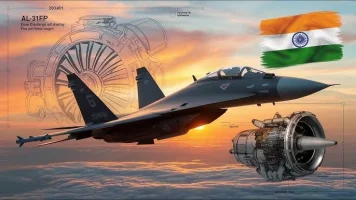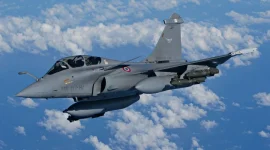- Views: 6K
- Replies: 60

The Indian Ministry of Defense (MoD) has declined a proposal by the Indian Navy to equip its Rafale M fighter jets with the domestically developed Uttam Active Electronically Scanned Array (AESA) Fire Control Radar (FCR).
This decision has ignited a debate within the defense community regarding the balance between cost, technological advancement, and strategic autonomy in India's military modernization efforts.
The Navy had advocated for the Uttam radar to ensure commonality with its existing MiG-29K fighters and the upcoming Twin Engine Deck Based Fighter (TEDBF) program, both of which are planned to utilize the indigenous radar system. Proponents argued that this commonality would streamline maintenance, training, and weapons integration across the naval air fleet.
However, the MoD cited several reasons for rejecting the proposal. Firstly, integrating the Uttam radar into the Rafale M platform would incur significant costs. Secondly, the MoD expressed concerns about the radar's reliance on gallium arsenide (GaAs) technology for its transmit/receive (T/R) modules.
While the Uttam radar boasts a higher number of T/R modules (968) compared to the Rafale M's existing RBE2 radar (838), the latter utilizes GaAs technology.
The MoD favors the more advanced gallium nitride (GaN) technology, which offers superior range and performance. Although DRDO has reportedly developed GaN T/R modules for future applications like the AMCA, these were not considered for the Rafale M upgrade.
This decision has drawn criticism from those who believe it undermines India's push for self-reliance in defence technology. They argue that integrating the Uttam radar would not only reduce dependence on foreign Original Equipment Manufacturers (OEMs) like Dassault Aviation and Thales but also provide valuable experience in integrating advanced radar systems onto complex fighter platforms.
Furthermore, proponents highlight that utilizing the Uttam radar would grant the Navy greater control over weapons integration and future upgrades, potentially reducing long-term costs and enhancing operational flexibility.
The MoD's decision reflects the complex considerations involved in modernizing a nation's armed forces. While cost and technological advancement are crucial factors, the decision also touches upon broader issues of strategic autonomy and the role of domestic research and development in achieving national security objectives.



